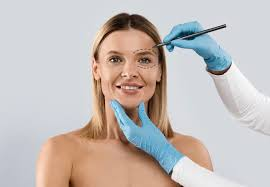A Comprehensive Guide to Insurance Coverage and Procedures
Eyelid Surgery: A Comprehensive Guide to Insurance Coverage and Procedures
Eyelid surgery, also known as blepharoplasty, is a cosmetic procedure that aims to improve the appearance of the eyelids by removing excess skin, muscle, and fat. While some people opt for this surgery for aesthetic reasons, it can also be medically necessary in certain cases, such as when the excess skin or fat is impairing vision. In this article, we’ll explore the types of eyelid surgery, insurance coverage, and what to expect during the procedure.
Types of Eyelid Surgery
There are two main types of eyelid surgery:
Upper Eyelid Surgery (Upper Blepharoplasty): This procedure addresses concerns with the upper eyelids, such as drooping or excess skin that can impair vision or create a tired appearance.
Lower Eyelid Surgery (Lower Blepharoplasty): This surgery targets the lower eyelids, removing excess fat, skin, and sometimes tightening the muscle to reduce the appearance of undereye bags or sagging.
Some patients choose to undergo both procedures simultaneously for a more comprehensive rejuvenation of the eye area.
Insurance Coverage for Eyelid Surgery
Insurance coverage for eyelid surgery can vary depending on several factors, including the purpose of the surgery (cosmetic or functional) and the specific plan’s policies. Here’s a general overview of when insurance might cover the procedure:
Functional Eyelid Surgery: If the excess skin or fat on the eyelids is impairing vision or causing functional problems, insurance is more likely to cover the procedure, either partially or fully. This is considered a medically necessary procedure.
Cosmetic Eyelid Surgery: When the surgery is solely for cosmetic purposes, such as reducing signs of aging or improving the overall appearance of the eyelids, insurance typically does not cover the costs. However, some plans may offer coverage for cosmetic procedures if certain criteria are met.
It’s essential to check with your insurance provider and review your plan’s policies and coverage details before undergoing eyelid surgery. Many insurance companies require documentation from an ophthalmologist or optometrist to verify the medical necessity of the procedure.
By taking the necessary preparatory steps, you can help minimize risks and ensure a more comfortable and successful eyelid surgery experience.
Recovery and Aftercare
The recovery period after eyelid surgery is crucial for achieving optimal results and minimizing the risk of complications. Here’s what you can expect during the recovery process and some important aftercare tips:
Immediate Post-operative Care: Immediately after the surgery, your eyelids will be covered with ointment and cold compresses to help reduce swelling and discomfort. You may experience some mild pain, which can be managed with prescribed pain medication.
Bruising and Swelling: Significant bruising and swelling around the eyes are common and can last for 1-2 weeks or longer. This is a normal part of the healing process and should gradually subside.
Activity Restrictions: Your surgeon will advise you to avoid strenuous activities, bending over, and lifting heavy objects for a few weeks after the surgery to prevent increased swelling and bleeding.
Eye Care: You may need to use eye drops or ointments to prevent dryness and promote healing. Your surgeon will provide specific instructions on how to care for your eyes during the recovery period.
Incision Care: Follow your surgeon’s instructions for caring for your incisions, which may include cleaning them with a saline solution and applying ointments or dressings.
Sun Protection: Exposure to direct sunlight can cause discoloration or scarring along the incision lines. Wear sunglasses and use sun-protective clothing or hats when going outside during the recovery period.
Follow-up Appointments: Your surgeon will schedule follow-up appointments to monitor your healing progress and remove any stitches or staples, if necessary.
Be Patient: While the initial swelling and bruising may subside within a few weeks, it can take several months for the final results of eyelid surgery to become fully apparent. Be patient and trust the healing process.
Adhering to your surgeon’s post-operative instructions and attending all follow-up appointments are essential for a smooth and successful recovery after eyelid surgery.
Complementary Procedures and Treatments
In some cases, eyelid surgery may be combined with other cosmetic procedures or treatments to achieve a more comprehensive rejuvenation of the facial appearance. Here are some complementary procedures that may be considered:
Brow Lift: A brow lift, also known as a forehead lift, can be performed in conjunction with an upper eyelid surgery to address sagging or drooping eyebrows, which can contribute to a tired or aged appearance.
Facelift: For individuals seeking more comprehensive facial rejuvenation, a facelift may be combined with eyelid surgery to address sagging skin and wrinkles in the mid-face and lower face areas.
Dermal Fillers: After eyelid surgery, some patients may choose to have dermal fillers injected around the eye area to help restore volume loss and smooth out fine lines and wrinkles.
Laser Treatments: Non-invasive laser treatments, such as laser skin resurfacing or intense pulsed light (IPL) therapy, can be used to improve the overall tone and texture of the skin around the eyes and reduce the appearance of fine lines and age spots.








COMMENTS